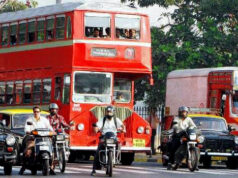Imagine you were a tailor with a shop the size of 5 coffins. I couldn’t think of a better spatial analogy! Now atleast 40% of the shop space remains un-utilized. So how do you make use of it? I would balk at opening a cyber cafe (basically setting up 2 computers and connecting them online) in this space, considering over-riding aesthetic tastes of mine. But this is precisely what the shop where I am writing this, has done; combined the un-utilized shop space to a profitable business considering the number of visitors, and he gave a damn to the combination of tailor cum cyber cafe.
It has always been a problem of businessmen and markets as to how best they could make use of inventory, be it space or goods. Most markets in India work on the lines of credit, so business men have more money in terms of goods (a lot of it could be sitting idle in their inventories) than actual cash. A potential “barter market” is out there for companies and individuals to exchange goods and services, values which are negotiable and transactions which are voluntary between both the parties. Enter the internet. See how it has enabled to bring back “barter” to business.
Jagran, a newspaper needed lots of appliances (cell phones, leather planners etc) for its corporate marketing strategy. Flow of cash as always being a crunch, they approached here. Soon they could offer advertising space to appliance owners who were willing to offer appliances (basically making use of inventories) to Jagran in lieu for advertising space.
While barter business has been popular in terms of C2C (exchanges between consumers) online, it is now catching up well with the B2B segment as well.
Though the New Economy shows online barter in a new light, I am reminded of Adam Smith’s quote: “The propensity to truck, barter and exchange one thing for another is common to all men, and to be found in no other race of animals.” Studies of species show that only the homo sapiens had evolved the tool of superior evolutionary advantage – trade. Voluntary exchanges hold the key to economic prosperity. A feature, sadly lacking in most government-dominated transactions!
Post Disclaimer
The opinions expressed in this essay are those of the authors. They do not purport to reflect the opinions or views of CCS.





